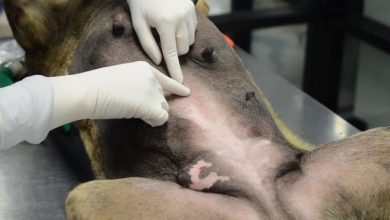One Puppy, Endless Love: Uncovering the Joys of Canine Monoparenting!

1. Introduction
Can a dog only have one puppy? The answer to this question depends on the breed of dog and other factors, such as the age and health of the mother. In this article, we will look at the different breeds of dogs and their litter sizes, factors that affect the number of puppies a dog can have, what is the average litter size for dogs, how to determine how many puppies a dog will have, ways to help increase the chances of having more than one puppy per litter, and common reasons why a dog might only have one puppy in its litter.
2. Different Breeds of Dogs and Their Litter Sizes
The size of a dog’s litter depends on its breed. Smaller breeds tend to have smaller litters, while larger breeds tend to have larger litters. For example, Chihuahuas typically have litters with two to four puppies while Great Danes typically have litters with six to eight puppies. Some breeds even vary within themselves – some Poodles may only produce two puppies while others may produce up to eight.
3. Factors That Affect the Number of Puppies a Dog Can Have
In addition to breed size, there are other factors that can affect how many puppies a dog can produce in one litter. These include:
• Age – younger mothers usually produce larger litters than older mothers
• Health – if the mother is unhealthy or malnourished she may not be able to carry or deliver as many puppies
• Diet – if the mother does not receive proper nutrition during her pregnancy she may not be able to sustain as many puppies
• Stress – if the mother is under stress during her pregnancy it can cause her body to reject some or all of her embryos
4. What is the Average Litter Size for Dogs?
The average litter size for dogs is between four and six puppies per litter. However, there are exceptions; some breeds may only produce two or three puppies while others may produce up to ten or more!
5. How to Determine How Many Puppies a Dog Will Have
It is impossible to determine exactly how many puppies a dog will have until she gives birth; however, there are certain methods that can give an indication of how many puppies she might carry in her womb. These include:
• Ultrasound – this method uses sound waves to create an image inside the mother’s uterus which can show how many embryos are present
• Blood test – this method measures hormone levels in the blood which can indicate how far along in her pregnancy she is and therefore how many embryos she has
6. Ways to Help Increase the Chances of Having More Than One Puppy Per Litter
There are several ways that you can help increase your chances of having more than one puppy per litter:
• Provide proper nutrition – make sure your female receives adequate nutrition throughout her pregnancy so that she has enough energy and nutrients for all her embryos
• Reduce stress levels – try your best to keep your female relaxed during her pregnancy so as not to cause any unnecessary stress which could lead her body rejecting some or all of her embryos
7. Common Reasons Why a Dog Might Only Have One Puppy in Its Litter
There are several reasons why a dog might only have one puppy in its litter including:
• Smaller breed size – smaller breeds tend to produce smaller litters due their small frame size • Age – older mothers often experience difficulty carrying multiple pregnancies due their declining fertility levels • Health issues – if either parent has any health issues it could lead them producing fewer offspring than usual • Stress levels – high stress levels during pregnancy can cause female dogs’ bodies rejecting some or all their embryos
8. Conclusion
In conclusion, whether or not a dog can only have one puppy depends on various factors such as breed size, age and health status of both parents as well as diet and stress level during pregnancy. While it is impossible to determine exactly how many puppies a female will give birth too until after delivery; there are certain methods available that can give an indication such as ultrasound scans and blood tests which measure hormone levels in order predict embryo numbers accurately before delivery takes place.Furthermore there are ways you can help increase your chances of having more than one puppy per litter by providing adequate nutrition throughout gestation period reducing stress levels etcetera.



